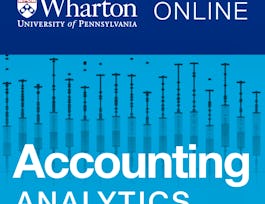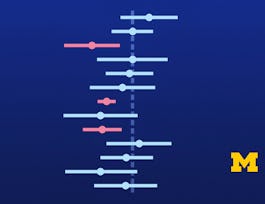Welcome to the Pre-MBA Statistics course! By the end of this course, you will be able to describe how statistics can be used to summarize, analyze, and interpret data. This course introduces you to some aspects of descriptive and inferential statistics. You will learn to distinguish between various data types and describe the operations that you can execute with each type of data and the right tools to use. The course also discusses the concepts of probability, which form the backbone of statistical analysis. In particular, the course explores how data behaves and provides insight into its analysis. Further, it discusses how data can be sampled and the pros and cons of these methods. The course also delves deeper into the behavior of large data sets based on well-established statistical results. This also enables you to identify the pitfalls of incorrectly using statistical laws. Lastly, you will learn how to estimate population parameters based on limited data and check the correctness of hypotheses about populations from limited data.



Pre-MBA Statistics


Instructors: Sriram Sankaranarayanan
Sponsored by Coursera Learning Team
127,082 already enrolled
(252 reviews)
Recommended experience
What you'll learn
Explore the types of data and the basics of probability.
Describe how a relatively small sample of data can help to infer about a large population.
Justify arguments about a population based on limited data.
Details to know

Add to your LinkedIn profile
14 assignments
See how employees at top companies are mastering in-demand skills


Earn a career certificate
Add this credential to your LinkedIn profile, resume, or CV
Share it on social media and in your performance review

There are 6 modules in this course
In this module, you will learn about various types of data. You will gain insight into the types of data based on how they can be organized and the amount of inference possible from each of them. The module also analyzes the unique characteristics of diverse types of data. Lastly, you will also learn operations with usability and interpretability of various kinds of data.
What's included
15 videos4 readings2 assignments1 discussion prompt
In this module, you will learn about the basics of probability and the concept of random variables. This provides a relatively more formal approach to how data behaves and how uncertainties are modeled mathematically. Finally, the module discusses random variables and the special mathematical entities that model numerical data well and help in inferences.
What's included
16 videos3 readings3 assignments1 discussion prompt
In this module, you will learn about different types of sampling methods used in surveys. Such sampling can be completely randomized or non-randomized. You will learn the pros and cons of these techniques and identify the right method to use in the situation you have in hand. You will also analyze the presentation of two important results: the law of large numbers and the central limit theorems.
What's included
11 videos4 readings3 assignments1 discussion prompt
The task of collecting data from all members of a population is often expensive and sometimes impossible. You can, however, easily collect sample data from a population. In this module, you will learn to make inferences about the characteristics of the population from which you have collected sample data. In this module, you will learn about point estimation and then be able to construct a point estimate of the mean and standard deviation of data in the population. If the data you are interested in is expressed as a proportion, you can construct a point estimate of that proportion. The module also discusses interval estimation. You will learn how to build a confidence interval or a range around a point estimate so that you are appropriately confident that the population parameter will fall within that interval regardless of the sample from which the point estimate was obtained.
What's included
10 videos3 readings3 assignments1 discussion prompt
Given a sample of values and a claim that the sample comes from a population with certain characteristics, after going through this module, you will be able to construct tests that will justify or reject such a claim. You will learn the logic behind constructing and executing tests for means and proportions. You will also learn about tests to compare the properties of two populations based on samples from both populations.
What's included
11 videos3 readings3 assignments1 discussion prompt
This is a peer-review assignment based on the concepts taught in the Pre-MBA Statistics course. In this assignment, you will be able to apply the skills learned in the course in a realistic situation.
What's included
1 video1 peer review
Instructors


Offered by
Why people choose Coursera for their career




Learner reviews
252 reviews
- 5 stars
68.37%
- 4 stars
25.29%
- 3 stars
3.16%
- 2 stars
0.39%
- 1 star
2.76%
Showing 3 of 252
Reviewed on May 18, 2023
Fundamental and Neatly laid out informative course.
Reviewed on Dec 8, 2024
I get a lot of insights about Statistical Data and how to apply those data.
Reviewed on May 22, 2023
The course was good and informational but ,the peer review system wasn't impressive.
Recommended if you're interested in Data Science

University of Colorado Boulder

University of Pennsylvania

University of Michigan

Johns Hopkins University

Open new doors with Coursera Plus
Unlimited access to 10,000+ world-class courses, hands-on projects, and job-ready certificate programs - all included in your subscription
Advance your career with an online degree
Earn a degree from world-class universities - 100% online
Join over 3,400 global companies that choose Coursera for Business
Upskill your employees to excel in the digital economy


